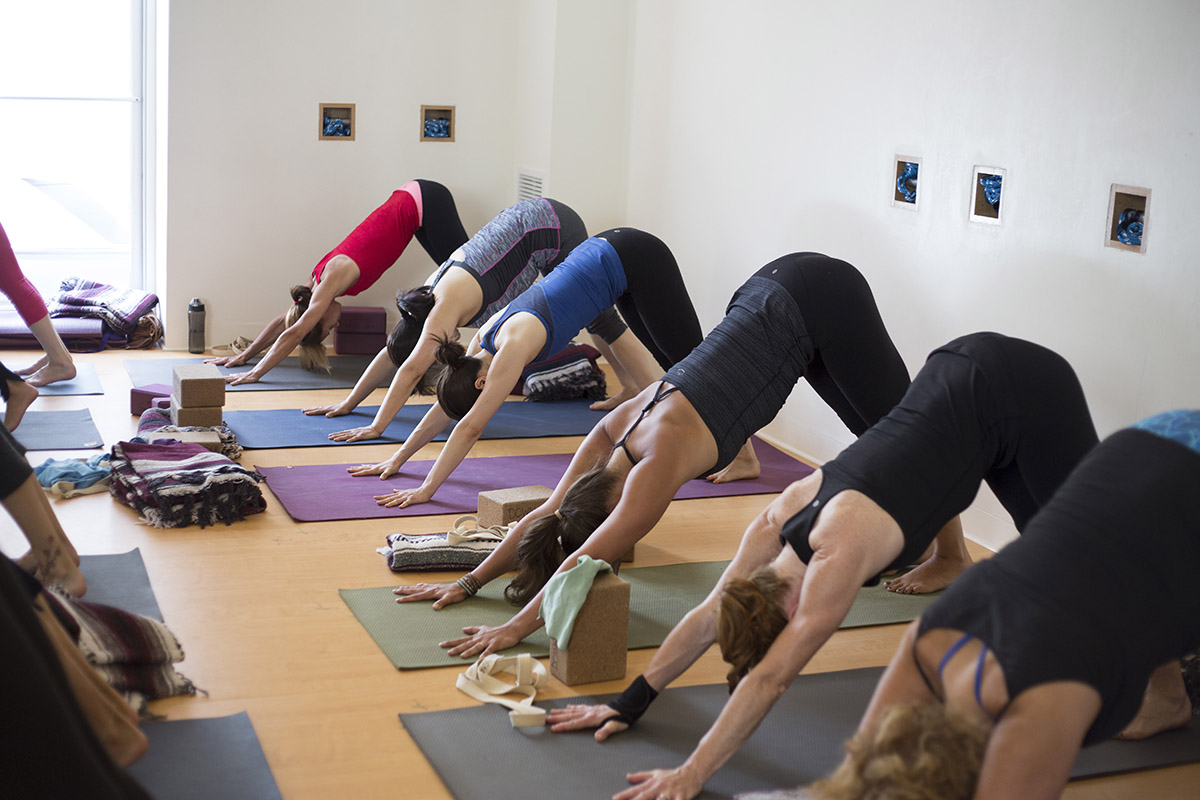Which Style of Yoga Is Right for You?

A class at Down Under School of Yoga. Photo provided
A glance at the average yoga studio’s schedule is enough to make a new—or even returning—yogi’s head spin. What’s the difference between power yoga and Vinyasa? How do you pronounce Jivamukti? What’s Ashtanga?
We asked Justine Wiltshire Cohen, the director of Down Under School of Yoga, what all those titles actually mean, and which style of yoga is right for you.
Vinyasa
What it is: Perhaps the most common school of yoga, Vinyasa classes use “a continuous sequence of poses that flow from one to another with an inhale or exhale,” Cohen says.
Who it’s for: Yogis looking for a style full of movement.
Ashtanga
What it is: Ashtanga uses the same set of poses in each class. “It is a continuous flow, and traditionally practiced in a self-led fashion, where the student moves through the sequence at their own pace, adding increasingly difficult poses,” Cohen says.
Who it’s for: Athletic yogis driven enough to self-motivate.
Bikram
What it is: The style most commonly associated with hot yoga, Bikram classes are taught in a room heated to 102 degrees, using the same 26 poses in each class.
Who it’s for: “This style is not for the faint of heart, and good for those who enjoy knowing what comes next,” Cohen says.
Gentle yoga
What it is: As the name suggests, gentle yoga is taught at a slower, easier pace, allowing students the time to learn and modify the poses, or stop for rest and meditation.
Who it’s for: “Gentle yoga is a great introduction to yoga for those who enjoy a slower pace, those with injuries, or older students hesitant to dip their toe into more active practices,” Cohen says.
Iyengar
What it is: These classes demonstrate one pose at a time, with detailed alignment instructions to make sure each student is moving through the class correctly.
Who it’s for: The technique junkie not worried about working up a sweat.
Jivamukti
What it is: Jivamukti sequences are based on Vinyasa flows, but Cohen notes that they emphasize “philosophic yogic themes,” ranging from chakras to questions of morals.
Who it’s for: Yogis looking for a side of deep thought with their workout.
Kundalini
What it is: “Kundalini yoga focuses heavily on breath work and chanting, in combination with poses, to cultivate deep, focused attention,” Cohen says.
Who it’s for: Individuals interested in a mental and spiritual experience.
Power Yoga
What it is: No surprise here—power yoga, or power flow, classes provide a fast, physically taxing set of poses. Cohen adds that many power classes are also heated.
Who it’s for: The athlete looking for a challenge on the mat.
Restorative
What it is: Similar to gentle yoga, restorative classes are all about rest. Though Cohen says there may be a few poses and stretches, these sessions are all about finding peace and tranquility.
Who it’s for: The stressed-out individual looking to unwind.
Yin
What it is: Yin classes have students hold poses for long periods of time, allowing for “a slow, deep opening of the muscles and tissue,” Cohen says.
Who it’s for: “If you’re someone who can’t stop moving, Yin could be just the ticket for finding a bit of balance,” Cohen says.


